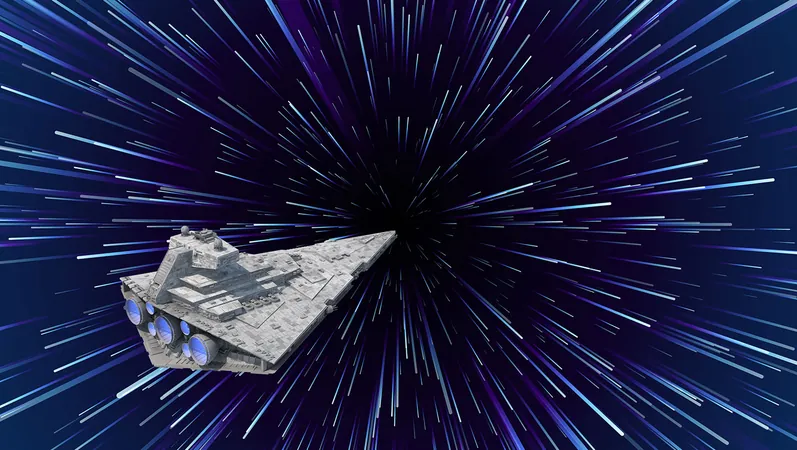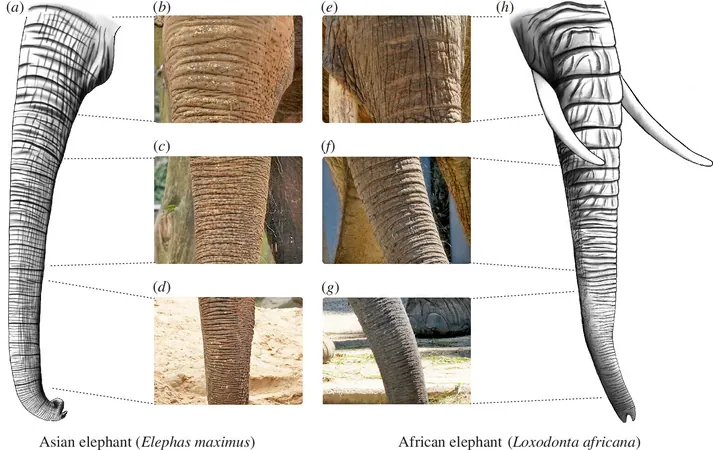
The Race Beyond Our Solar System: Why Spacecraft Need an Extra Push to Journey Between Stars
2024-10-07
Author: Wei Ling
The Challenge of Interstellar Travel
In the captivating realm of space exploration, the challenge of traversing the vast distances between stars looms larger than ever. Traditional propulsion methods have proven inadequate, leaving scientists and engineers seeking innovative solutions. As we stand on the brink of interstellar travel, understanding the physics of acceleration, thrust, and the very nature of our cosmos becomes imperative.
The Distance to Our Nearest Star
Imagine a journey to another star, a feat that would take thousands of years with current technology. For perspective, the nearest star, Proxima Centauri, is approximately 4.24 light-years away—a distance equivalent to nearly 25 trillion miles. Yes, you read that right! To put it in context, if you were to travel at the speed of our fastest spacecraft, the Parker Solar Probe, it would still take over 6,000 years to reach Proxima Centauri. Clearly, we need an extra boost!
Current Propulsion Methods
Current rocket engines primarily rely on conventional chemical propulsion, where fuel combusts to produce thrust. However, to leverage the forces necessary for interstellar travel, alternative methods are being investigated. Concepts such as nuclear propulsion, which could harness the immense energy of nuclear fusion, or even the theoretical propulsion systems like the Alcubierre warp drive, could potentially catapult spacecraft across the cosmos at unprecedented speeds.
The Physics of Acceleration
A key component of this ambitious endeavor is solving the complex equations of propulsion and momentum—how to achieve not just speed, but sustained acceleration over vast distances without succumbing to the pull of gravity or the resistance of space debris. Exploring concepts such as ion propulsion, which utilizes electric fields to accelerate ions, represents a significant leap in efficiency and capability.
Materials for Deep Space Travel
Moreover, advances in materials science could yield spacecraft capable of withstanding the extreme conditions of deep space travel. As we push to venture beyond our solar system, the development of lightweight, heat-resistant materials that can endure immense pressures and radiation is crucial.
The Human Element
And let's not forget the drive of human curiosity! Science fiction has long painted vivid pictures of life beyond Earth, igniting the imagination of what awaits us in the stars. While these tales may seem far-fetched, they often inspire real scientific inquiry and technological advancements.
Conclusion: The Future of Space Travel
In summary, the quest to explore interstellar space is not just about reaching new stars; it's about pushing the boundaries of human ingenuity, imagination, and resilience. The journey might be daunting, but as we innovate and adapt, the hope of one day stepping onto distant worlds becomes a thrilling possibility. So stay tuned, because the future of space travel is just beginning, and it promises to be filled with astonishing discoveries!


 Brasil (PT)
Brasil (PT)
 Canada (EN)
Canada (EN)
 Chile (ES)
Chile (ES)
 España (ES)
España (ES)
 France (FR)
France (FR)
 Hong Kong (EN)
Hong Kong (EN)
 Italia (IT)
Italia (IT)
 日本 (JA)
日本 (JA)
 Magyarország (HU)
Magyarország (HU)
 Norge (NO)
Norge (NO)
 Polska (PL)
Polska (PL)
 Schweiz (DE)
Schweiz (DE)
 Singapore (EN)
Singapore (EN)
 Sverige (SV)
Sverige (SV)
 Suomi (FI)
Suomi (FI)
 Türkiye (TR)
Türkiye (TR)